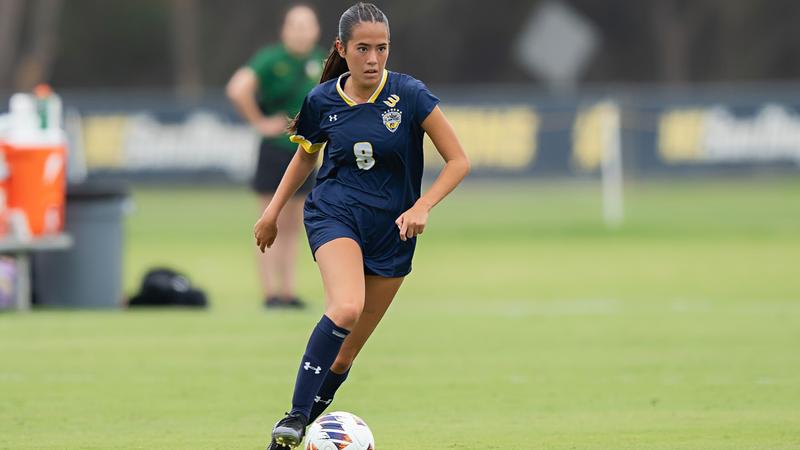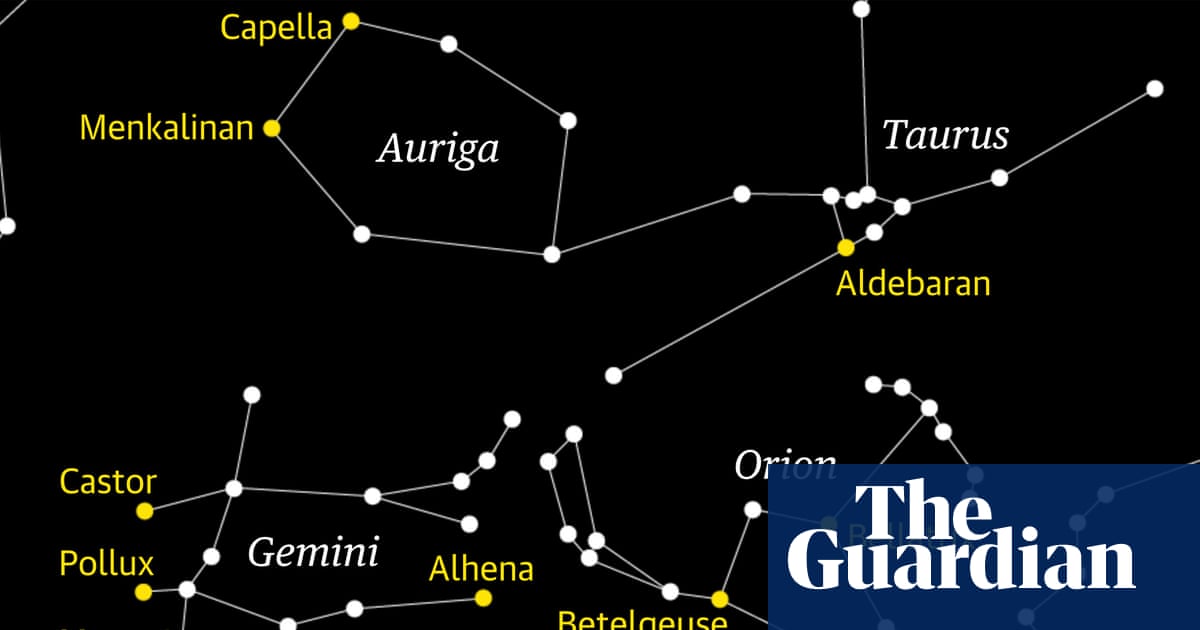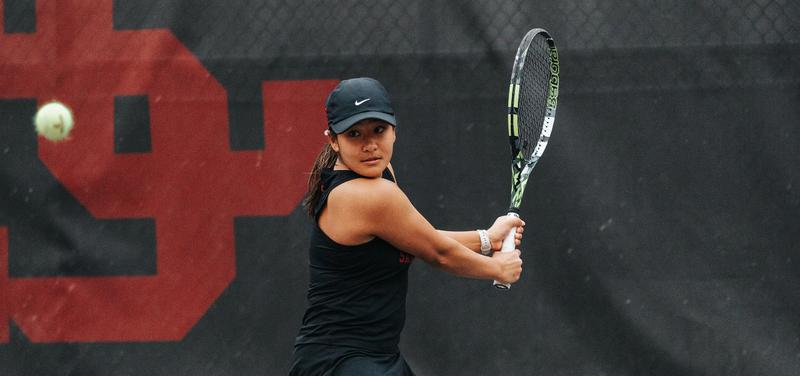BERKELEY and MORAGA, Calif. – The Santa Clara women’s tennis team picked up a total of five victories over the…
Blog
-

Assessment of objective cyclotorsion changes using Cyclocheck software
Introduction
V-pattern strabismus is one of the most common alphabetic patterns.1 It involves a more convergent (or less divergent) horizontal deviation in downgaze than in upgaze and becomes clinically significant when vertical incomitance exceeds 15 prism diopters (Δ).2
Undoubtedly, in most cases, the V-pattern is associated with the presence of inferior oblique muscles overaction (IOOA), which leads not only to vertical and horizontal deviations but also to excyclodeviation. Excyclotorsion resulting from inferior oblique overaction is thought to contribute to the development of V-pattern strabismus by inducing extorsional displacement of the globes, thereby increasing horizontal divergence in downgaze.3–5
Most V-patterns are, however, congenital or develop early in life, allowing suppression or anomalous retinal correspondence to prevent subjective awareness of excyclodeviation. Despite this, objective excyclotorsion in patients with V-pattern strabismus can be observed in fundus photographs, as shown in Figure 1.
Figure 1 A fundus photograph demonstrating bilateral ocular excyclotorsion in patient with bilateral inferior oblique overaction (authors own material).
Objective cyclotorsion is the measurable rotation of the eye around its visual axis, assessed using landmarks like the fovea and optic disc. The disc-foveal angle (DFA) is commonly measured via fundus photography, scanning laser ophthalmoscopy, or automated software, with studies comparing their accuracy and clinical utility.6–9 In 2021 our team developed Cyclocheck, a web-based diagnostic tool (freely available at www.cyclocheck.com) for measuring objective cyclotorsion in both clinical and research settings and proved it to be a repeatable and reliable method for office based DFA assessment.10,11 Figure 2 shows a screenshot of the Cyclocheck software interface.

Figure 2 Cyclocheck software interface.
Bilateral graded recession of the inferior oblique muscles effectively corrects V-pattern strabismus across varying degrees of their overaction.12,13 It allows tailoring the surgical dosage according to IOOA severity and extent of V pattern, reducing both vertical and horizontal incomitance.14–16 It has also been proven to have prominent incyclorotating effect in patients with various types of strabismus associated with IOOA.17 However, to the best of our knowledge, no study to date has evaluated the effect of bilateral inferior oblique graded recession on objective cyclotorsion asymmetry, specifically comparing the impact of symmetric and asymmetric surgeries.
This study aims to evaluate changes in objective cyclotorsion using Cyclocheck following bilateral graded inferior oblique recession in patients with V-pattern strabismus and inferior oblique overaction. It also aims to investigate the impact of symmetric and asymmetric surgeries on cyclotorsion asymmetry between the eyes.
Materials and Methods
This retrospective study analyzed consecutive cases of patients presenting (eso/exo) V-pattern strabismus (≥15 prism diopters difference in measurement between upgaze and downgaze) with IOOA who underwent bilateral inferior oblique muscle graded recession, with or without concurrent horizontal rectus surgery. Eligible participants demonstrated binocular vision and had no history of strabismus surgeries, including procedures on other vertically acting muscles. Informed consent was obtained from each participant. The recorded data included age, gender and the amount of V-pattern, defined as the difference between down- and upgaze. It also covered the amount of inferior oblique (IO) muscle recession in millimeters for each eye separately, the total recession for both eyes combined, and pre- and post-operative objective cyclotorsion measured by Cyclocheck using fundus photographs. Digital fundus photographs of both eyes of all study subjects were obtained using a DRS nonmydriatic fundus camera (CenterVue DRS Automatic Retinal Camera, Welch Allyn). All measurements were made before and 3 months following the surgery. Photographs were taken under binocular viewing conditions while the subject looked at an internal fixation target. A chin and forehead rest with side marks were used as a guide to ensure proper head position. The disc-foveal angle was calculated using a web-based diagnostic tool for assessing objective cyclotorsion named Cyclocheck.
The inferior oblique recession was classified as “symmetrical” when the same degree of recession was performed on both eyes, provided the vertical deviation in the primary position was less than 5 prism diopters. If hypertropia ranged from 5 to 10 prism diopters, the recession in the more hypertropic eye was increased by 2 mm; for 10 to 15 prism diopters, by 4 mm; and for 15 or more prism diopters, by 6 mm. The amount of inferior oblique muscle recession was determined based on the severity of overelevation in adduction: +1 IOOA corresponded to 8 mm of recession, +2 IOOA to 10 mm, +3 IOOA to 12 mm, and +4 IOOA to 14 mm.
All procedures performed in studies involving human participants conformed to all local laws and were by the ethical standards of the Bioethical Committee of the Medical University in Lodz, Poland and with the 1964 Helsinki declaration and its later amendments or comparable ethical standards. The study was approved by the Bioethical Committee of the Medical University in Lodz, Poland (RNN/260/23/KE).
Statistical Analysis
Comparisons were made using paired t-test and Wilcoxon signed-rank test. Normality of data distribution was assessed using the Shapiro–Wilk test. Paired t-tests were used for normally distributed variables, while non-normally distributed variables were analyzed using the Wilcoxon signed-rank test. Correlations between the variables were evaluated using the Pearson correlation coefficient (r). A Fisher’s z-test was used to examine the difference between two correlation coefficients. Statistical analysis was conducted using Python (Python Software Foundation, Netherlands). A p-value of ≤ 0.05 was considered statistically significant.
Results
A total of 50 patients (100 eyes) were included in the study. The gender distribution was comparable, with 26 females and 24 males. The mean age was 10.46 years. V-pattern esotropia was observed in 22 patients (44%), and exotropia in 28 patients (56%). All the patients enrolled in the study underwent uneventful bilateral inferior oblique muscle graded recession of 8, 10, 12 and 14 mm as detailed in the methodology section. The procedure was symmetrical in 21 cases and asymmetrical in 29 cases (22 by 2 mm, 5 by 4 mm and 2 by 6 mm). The mean inferior oblique recession in millimeters was 10.92±1.81 in the right eye and 10.92±1.94 in the left eye, with the bilateral absolute amount of 21.84±3.04. The amount of V-pattern decreased significantly in all cases, but a residual V-pattern was observed in 4 cases (8%) – 5-10 PD of vertical incomitance in 3 cases and 25PD in one case (the patient had preoperative V-pattern of 50PD). Clinical characteristics of the study participants are presented in Table 1.

Table 1 Clinical Characteristics of the Study Participants
A positive correlation was observed between the preoperative amount of V-pattern and preoperative absolute objective cyclotorsion (r=0.36, p=0.0093). This was no more valid postoperatively when absolute objective cyclotorsion had a light negative correlation with remnant V-pattern (r= −0.09, p=0.0001). A positive correlation was observed between the amount of IO recession and the change in absolute objective cyclotorsion (r = 0.46, p = 0.00), as shown in Figure 3. The mean reduction of objective cyclotorsion was 2.52° of cyclotorsion/ per 2 mm of recessed inferior oblique muscle. As shown in Figure 4, the total change of absolute objective cyclotorsion was moderately correlated with the reduction of the V-pattern (r=0.38, p=0.0032).

Figure 3 The correlation between the amount of inferior oblique recession and change in absolute objective cyclotorsion.

Figure 4 The correlation between the total change in absolute objective cyclotorsion and the reduction of the V-pattern.
A linear relationship was observed between the amount of inferior oblique recession in each eye separately and the change in objective cyclotorsion of the respective eye (right eye: r=0.37, p=0.0083; left eye: r=0.37, p=0.0087). The correlations were less evident than the one for both eyes, but they did not differ significantly (Fisher’s z-test 0.72 p=0.47). There was a positive correlation between the amount of preoperative objective cyclotorsion and the surgically induced change in objective cyclotorsion for each separate eye (Wilcoxon signed-rank test z= 6.452, p= <0.0001, Paired t test t= 5.1309, df= 54, p= <0.0001).
We also examined symmetric and asymmetric surgeries to assess their impact on cyclotorsion asymmetry between the eyes. Overall, the mean cyclotorsion asymmetry was significantly lower postoperatively (preoperative: 5.50°±3.40° vs postoperative: 4.00°±3.00°, p<0.001). However, this was independent of whether the surgery was symmetric or asymmetric. The influence on the amount of cyclotorsion asymmetry was similar in both groups (RE/LE difference: symmetric group 1.55°±4.15° and asymmetric group 1.47°±3.30°; p=0.938).
Discussion
Inferior oblique overaction (IOOA) and associated V-pattern strabismus present significant challenges in strabismus management, often requiring surgical intervention to restore ocular alignment and minimize torsional deviations. Our study contributes to the growing body of evidence supporting graded inferior oblique recession as an effective approach for reducing both objective cyclotorsion and V-pattern deviation.14,17,18
Multiple studies have investigated the effect of inferior oblique muscle weakening procedures on ocular torsion. As early as 1986, Kushner, in his research evaluating cyclotorsional effects, noted that weakening the inferior oblique or tightening the superior oblique resulted in long-term incyclorotation (clockwise for right eyes and counterclockwise for left eyes) of the axis of astigmatism by approximately 10°.19 Sharma et al20 compared Fink’s recession with modified Elliot and Nankin’s anteropositioning, both of which resulted in a comparable degree of intorsional shift (+2.5° and +4.7°, respectively), with no statistically significant difference between the two techniques. The mean preoperative extorsion was 9.8° in patients undergoing Fink’s recession and 11.4° in those undergoing modified Elliot and Nankin’s anteropositioning. A study by Farid et al21 evaluated the effect of inferior oblique anterior transposition (IOAT) on fundus torsion and detected significant decrease from 12.67±8.13° preoperatively to 3.40±5.06° postoperatively. Sethi et al17 compared various inferior-oblique weakening procedures achieving mean reduction in excyclotorsion 3.65° in group treated with inferior oblique recession.
The mean preoperative objective cyclotorsion in our study was 13.48°±6.36° in the right eye and 11.50°±6.71° in the left eye, consistent with the expected presence of excyclotorsion in patients with V-pattern strabismus and inferior oblique overaction.22–24 Notably, the mean disc-foveal angle (DFA) reported by Sethi et al17 for patients undergoing inferior oblique weakening for primary or secondary inferior oblique overaction was 11.52°±7.15°, a value closely aligning with our findings, further supporting the reproducibility of these measurements in similar patient populations. Similarly, a study by Lee et al18 investigating objective excyclotorsion following graded inferior oblique recession in patients with primary and secondary inferior oblique overaction (IOOA) reported a mean preoperative torsional angle of 13.25°±6.74° in patients with primary IOOA and 16.91°±7.57° in those with secondary IOOA.
A moderate positive correlation was found between the preoperative amount of V-pattern and absolute objective cyclotorsion (r=0.36, p=0.0093). However, postoperatively, this relationship was no longer observed, as absolute objective cyclotorsion showed a slight negative correlation with the remaining V-pattern (r= −0.09, p=0.0001), showing that V-pattern improvement is largely independent of the degree of torsional correction. A possible explanation for this result is that the surgical correction of the V-pattern strabismus and inferior oblique overaction disrupted the preoperative relationship between the magnitude of the V-pattern and objective cyclotorsion. Postoperatively, as the V-pattern was significantly reduced, the remaining variation in cyclotorsion may have been influenced by other factors, such as individual differences in muscle elasticity, neural adaptation, or residual oblique muscle function. Additionally, the slight negative correlation could suggest a compensatory mechanism, where some patients with minimal residual V-pattern exhibited greater postoperative cyclotorsion adjustments due to neural adaptation or changes in extraocular muscle dynamics. These mechanisms were examined in the study by Schworm et al, which analyzes the underlying factors contributing to the well-documented long-term postoperative subjective cyclotorsional changes.25
Following surgery, our study population showed a significant reduction in objective cyclotorsion (right eye: 5.99°±4.50°; left eye: 8.39°±3.82°), ultimately aligning closely with the levels observed in normal subjects. The average disc-foveal angle, as reported in the literature and confirmed by our previous research, typically ranges between 5° and 7.5°.7,11,26–29
The average excyclotorsion reduction observed in our study population was 2.52° for every 2 mm of inferior oblique muscle recession. These results are consistent with Harada et al30 estimated a 1° change for every 1 mm of recessed inferior oblique muscle. Lee et al18 reported Lee et al18 reported a statistically significant change in cyclorotation, but did not establish a correlation between the degree of recession and the change in cyclorotation, making it impossible to directly relate our results to his findings.
Moreover, we observed a positive correlation between the amount of inferior oblique recession and the change in absolute objective cyclotorsion (r=0.46, p=0.00), indicating that greater recession generally resulted in a more significant reduction in cyclotorsion. A similar observation was made by Sethi et al.17 A linear relationship was also detected when analyzing each eye separately, with similar correlation coefficients for the right (r=0.37, p=0.0083) and left eye (r=0.37, p=0.0087). Although these correlations were slightly weaker when considering both eyes together, the difference was not statistically significant (Fisher’s z-test 0.72, p=0.47). This suggests that while inferior oblique recession influences cyclotorsion at the individual eye level, the overall binocular effect remains consistent, reinforcing the effectiveness of this procedure in managing torsional misalignment.
Interestingly, we found a positive correlation between preoperative objective cyclotorsion and the change in postoperative objective cyclotorsion in each eye. This suggests that the eye with greater preoperative excyclotorsion undergoes a greater change in objective cyclotorsion following surgery. Our results align with those of Sethi et al17 who suggested that, at the pooled data level, this correlation might partly stem from the graded approach to inferior oblique weakening. In this approach, the choice of surgical procedure depends on the degree of inferior oblique overaction and the V pattern, with more powerful weakening procedures typically performed in eyes with greater baseline excyclotorsion. Additionally, they propose a possible “self-adjusting” mechanism in inferior oblique weakening procedures, in which the degree of preoperative excyclotorsion influences postoperative changes in excyclotorsion, regardless of the final anatomical position of the inferior oblique – an idea that warrants further examination.
We observed a significant reduction in the mean V-pattern, decreasing from 18.62Δ±9.77Δ to 2.26Δ±5.76Δ(p<0.0001). Sethi et al17 also reported a significant reduction in V-pattern, from 19.20Δ±6.31Δ to 6.45Δ±4.05Δ. However, these values represent all procedures evaluated in their study (including inferior oblique recession, recession and anteropositioning, anterior transposition, and anterior and nasal transposition), making direct comparison with our results difficult.
The procedure demonstrated a high success rate, with complete resolution of the V-pattern in 46 cases included in our study, accounting for 92% of the study population. The total change of absolute objective cyclotorsion was moderately correlated with the reduction of the V-pattern (r=0.38, p=0.0032). Taken together, these results support the role of graded inferior oblique muscle recession as an effective surgical option for the management of V-pattern strabismus. As stated in the introduction, no study to date has assessed the effect of bilateral inferior oblique graded recession on cyclotorsion asymmetry, particularly in terms of comparing the impact of symmetric and asymmetric surgeries. Postoperatively, we observed a significant reduction in cyclotorsion asymmetry between the eyes. However, our analysis detected that this reduction occurred regardless of whether the surgery was performed symmetrically or asymmetrically. Both surgical approaches demonstrated a comparable impact on cyclotorsion asymmetry, with the RE/LE difference measuring 1.55°±4.15° in the symmetric group and 1.47°±3.30° in the asymmetric group (p=0.938).
A study by Yilmaz et al31 examined the effects of unilateral and bilateral inferior oblique myectomy (IOM) on fundus torsion in patients with primary and secondary IOOA. Their findings demonstrated that bilateral IOM significantly reduced both the mean disc-foveal angle (DFA) and DFA asymmetry between the eyes across all patient groups. However, due to the fact that with this procedure, the remaining muscle is released freely into the Tenon’s capsule, the exact location where the muscle will reattach is unpredictable and thus difficult to compare among patients. This is why, direct comparison of the above-mentioned study with our results is limited.
Undoubtedly, our findings suggest that the symmetry of the procedure is not a determining factor in postoperative cyclotorsion alignment. Instead, other factors may play a more significant role in the observed improvements, highlighting the need for further investigation.
Possible limitation of our study is the retrospective design of this study, which may have led to potential bias in establishing causation. Additionally, the follow-up period was limited to 3 months, which may not capture long-term changes in cyclotorsion; however, based on our clinical experience and previous observations, the effect appears to be long-lasting. The relatively small sample size without a formal power analysis may limit the reliability of subgroup findings. An additional limitation of this study is that concurrent horizontal rectus muscle surgery was performed in some patients, which may have acted as a confounding factor and influenced the postoperative changes in ocular alignment or cyclotorsion.
Conclusion
Graded inferior oblique muscle recession is an effective surgical technique for reducing objective cyclotorsion and V-pattern deviation. Our findings demonstrate a significant correlation between the total amount of muscle recession and the overall change in absolute cyclotorsion. However, changes in cyclotorsion of individual eyes were not reliably predicted by the amount of recession in each eye. Additionally, postoperative reduction in interocular cyclotorsional asymmetry occurred regardless of whether the surgery was performed symmetrically or asymmetrically.
Acknowledgments
This research received no specific grant from any funding agency in the public, commercial, or not-for-profit sectors.
Disclosure
The authors declared no potential conflicts of interest with respect to the research, authorship, and/or publication of this article.
References
1. Zhu B, Wang X, Fu L, Yan J. Pattern strabismus in a tertiary hospital in Southern China: a retrospective review. Medicina. 2022;58(8):1018. doi:10.3390/medicina58081018
2. Saxena R, Dhiman R. Pattern strabismus. American academy of ophthalmology. Available from: https://www.aao.org/disease-review/pattern-strabismus.
Accessed .September 13 , 20223. Knapp P. Vertically incomitant horizontal strabismus, the so-called A and V syndromes. Trans Am Ophthalmol Soc. 1959;57:666.
4. Phillips PH, Hunter DG. Evaluation of ocular torsion and principles of management. In: Rosenbaum AL, Santiago AP, editors. Clinical Strabismus Management, Principles and Surgical Techniques. Philadelphia: WB Saunders; 1999:52–72.
5. Guyton DL. Ocular torsion: sensorimotor principles. Graefes Arch Clin Exp Ophthalmol. 1988;266(3):241–245. doi:10.1007/BF02181189
6. Jonas RA, Wang YX, Yang H, et al. Optic disc – fovea angle: the Beijing eye study. PLoS One. 2015;10(11):e0141771. doi:10.1371/journal.pone.0141771
7. Vélez Escolà L, Galán Terraza A, Lagrèze WA, et al. Disc-foveal angle and ocular counterrolling as a key in its interpretation. Arch Soc Esp Oftalmol. 2019;94(12):585–590. doi:10.1016/j.oftal.2019.05.019
8. Kanku MS, Sele S, Held U, et al. Cyclotorsion measurement on scanning laser ophthalmoscopy imaging compared with fundus photography in patients with fourth nerve palsy and healthy controls: cySLO-IV study. J Neuroophthalmol. 2012;41(4):e612–e618. doi:10.1097/WNO.0000000000000996
9. Jethani J, Dave P. A technique for standardizing disk foveal angle measurement. J AAPOS. 2015;19(1):77–78. doi:10.1016/j.jaapos.2014.08.015
10. Simiera J, Loba P. Cyclocheck: a new web-based software for the assessment of objective cyclodeviation. J AAPOS. 2017;21(4):305–308. doi:10.1016/j.jaapos.2017.02.009
11. Simiera J, Ordon AJ, Loba P. Objective cyclodeviation measurement in normal subjects by means of Cyclocheck® application. Eur J Ophthalmol. 2021;31(2):704–708. doi:10.1177/1120672120905312
12. Sokeer SH, Caldeira JA. V-pattern esotropia: a review; and a study of the outcome after bilateral recession of the inferior oblique muscle: a retrospective study of 78 consecutive patients. Binocul Vis Strabismus Q. 2023;18(1):35–48.
13. Caldeira JA. Some clinical characteristics of V-pattern exotropia and surgical outcome after bilateral recession of the inferior oblique muscle: a retrospective study of 22 consecutive patients and a comparison with V-pattern esotropia. Binocul Vis Strabismus Q. 2004;19(3):139–150.
14. Sokeer SH, Ali AL, Arafa ES, Awara AM, Shafik HM. Evaluation of graded recession of inferior oblique muscle for correction of different grades of V-pattern strabismus. BMC Ophthalmol. 2023;23(1):462. doi:10.1186/s12886-023-03210-x
15. Mostafa AM, Kassem RR. Comparative study of unilateral versus bilateral inferior oblique recession/anteriorization in unilateral inferior oblique overaction. Eur J Ophthalmol. 2017;28(3):272–278. doi:10.5301/ejo.5001062
16. Huang YT, Chen JJ-Y, Wu M-Y, et al. The effects of modified graded recession, anteriorization and myectomy of inferior oblique muscles on superior oblique muscle palsy. J Clin Med. 2021;10(19):4433. doi:10.3390/jcm10194433
17. Sethi A, Dhiman R, Mahalingam K, et al. Evaluation of change in objective cyclotorsion after various inferior oblique-weakening procedures. J AAPOS. 2023;27(6):345. doi:10.1016/j.jaapos.2023.08.016
18. Lee D, Kim WJ, Kim MM. Comparison of excyclotorsion following graded inferior oblique recession for primary versus secondary inferior oblique overaction. Int J Ophthalmol. 2020;13(8):1281–1286. doi:10.18240/ijo.2020.08.15
19. Kushner BJ. The effect of oblique muscle surgery on the axis of astigmatism. J Pediatr Ophthalmol Strabismus. 1986;23(6):277–280. doi:10.3928/0191-3913-19861101-05
20. Sharma P, Thanikachalam S, Kedar S, Bhola R. Evaluation of subjective and objective cyclodeviation following oblique muscle weakening procedures. Indian J Ophthalmol. 2008;56(1):39–43. doi:10.4103/0301-4738.37594
21. Farid MF, Sherin Bayoumy A, Seada M. Changes in fundus torsion following anterior transposition surgery of the inferior oblique muscle. BMFJ. 2023;40(surgical issue):55–67.
22. Cho SY, Lee SY, Lee CY. Clinical evaluation of excyclotorsion in patients with primary inferior oblique overaction. J Korean Ophthalmol Soc. 2012;53(9):1324–1329. doi:10.3341/jkos.2012.53.9.1324
23. Na KS, Lee SY, Lee YC. Ocular torsion in unilateral superior oblique palsy. J Korean Ophthalmol Soc. 2007;48(10):1388. doi:10.3341/jkos.2007.48.10.1388
24. Kushner BJ. A”, “V”, and other alphabet pattern strabismus. In: Taylor D, Hoyt CS, editors. Pediatric Ophthalmology and Strabismus.
3rd ed. London: Elsevier Saunders; 2005:922–931.25. Schworm HD, Eithoff S, Schaumberger M, Boergen KP. Investigations on subjective and objective cyclorotatory changes after inferior oblique muscle recession. Invest Ophthalmol Vis Sci. 1997;38(2):405–412.
26. Lengwiler F, Rappoport D, Jaggi GP, Landau K, Traber GL. Reliability of cyclotorsion measurements using scanning laser ophthalmoscopy imaging in healthy subjects: the CySLO study. Br J Ophthalmol. 2018;102(4):535–538. doi:10.1136/bjophthalmol-2017-310396
27. Williams TD, Wilkinson JM. Position of the fovea centralis with respect to the optic nerve head. Optom Vis Sci. 1992;69(5):369–377. doi:10.1097/00006324-199205000-00006
28. Bixenman WW, von Noorden GK. Apparent foveal displacement in normal subjects and in cyclotropia. Ophthalmology. 1982;89(1):58–62. doi:10.1016/S0161-6420(82)34862-9
29. Miyata M, Yoshikawa M, Ohtsuki H, et al. Age-related change and sex difference over 60s in disc-fovea angle in Japanese population: the Nagahama Study. Acta Ophthalmol. 2018;96(7):840–845. doi:10.1111/aos.13642
30. Harada M, Ito Y. Surgical correction of cyclotropia. Jpn J Ophthalmol. 1960;8:88–96.
31. Yilmaz OF, Oguz H. Evaluation of the effect of unilateral and bilateral inferior oblique myectomy on fundus torsion in primary and secondary inferior oblique overaction. North Clin Istanb. 2023;10(5):657–665. doi:10.14744/nci.2023.74875
Continue Reading
-

The real cause of depression may lie in just two brain cell types, scientists say |
In a major scientific breakthrough, scientists have identified two specific types of brain cells linked to depression for the first time, offering a clearer biological understanding of the disorder. Researchers at McGill University and the…
Continue Reading
-

Intel Phases Out “Ponte Vecchio” and “Arctic Sound” Data Center GPUs
Intel has apparently started a slow deprecation phase of its “Ponte Vecchio” Data Center GPU Max and “Arctic Sound” Data Center GPU Flex series. According to the changelog in the Intel XPU Manager—a free and open-source tool for monitoring and…Continue Reading
-

Evaluation of the clinical efficacy of nucleotide MALDI-TOF-MS for the
Introduction
The World Health Organization (WHO) identifies tuberculosis (TB) as a persistent and significant global health issue, with over 10 million new cases and more than 1.25 million deaths annually.1 Despite advancements in diagnostic…
Continue Reading
-

Watch the New Video for Moonlighter 2: The Endless Vault and Learn About the Ongoing Playtest!
Moonlighter 2: The Endless Vault is being developed by Digital Sun and published by 11 bit studios, and it’s set to release to Early Access on Steam. Recently, the team released a video where they talk…
Continue Reading
-

Borg’s First Goal Propels Tritons to Draw in Hawai‘i

Study finds prolonged fasting common among infants before anesthesia
Most children – including nearly 80% of infants – go without clear liquids before surgery for at least twice as long as guidelines recommend, according to an analysis of data on more than 70,000 children presented at the…
Continue Reading

The Night Sky This Week
Northern lights (aurora borealis) illuminate the night sky over Vienna during a geomagnetic storm on May 11, 2024. (Photo by MAX SLOVENCIK/APA/AFP via Getty Images)
APA/AFP via Getty Images
Each Monday, I pick out North America’s celestial…
Continue Reading

Starwatch: worth staying up for pleasing view of moon encountering Jupiter and Gemini | Space
It is worth staying up for this pleasing view of the moon as it encounters Jupiter and the brightest stars of Gemini, the twins. The chart shows the view looking east from London at 00:30 BST in the very early morning of 14 October.
Gemini will…
Continue Reading
